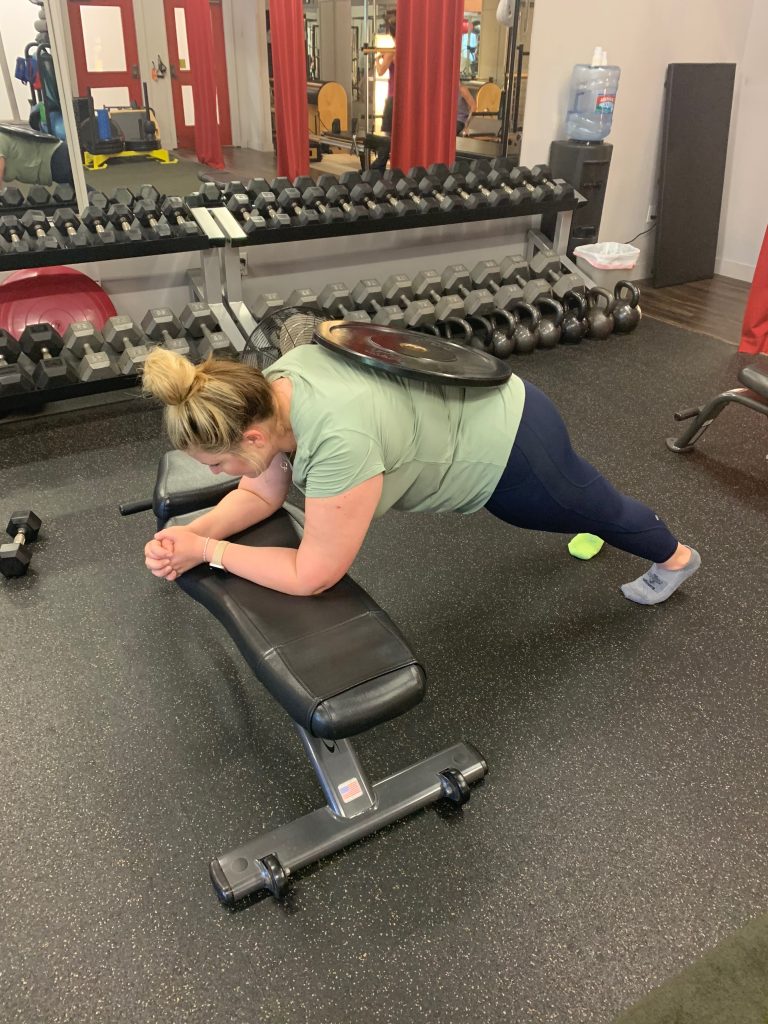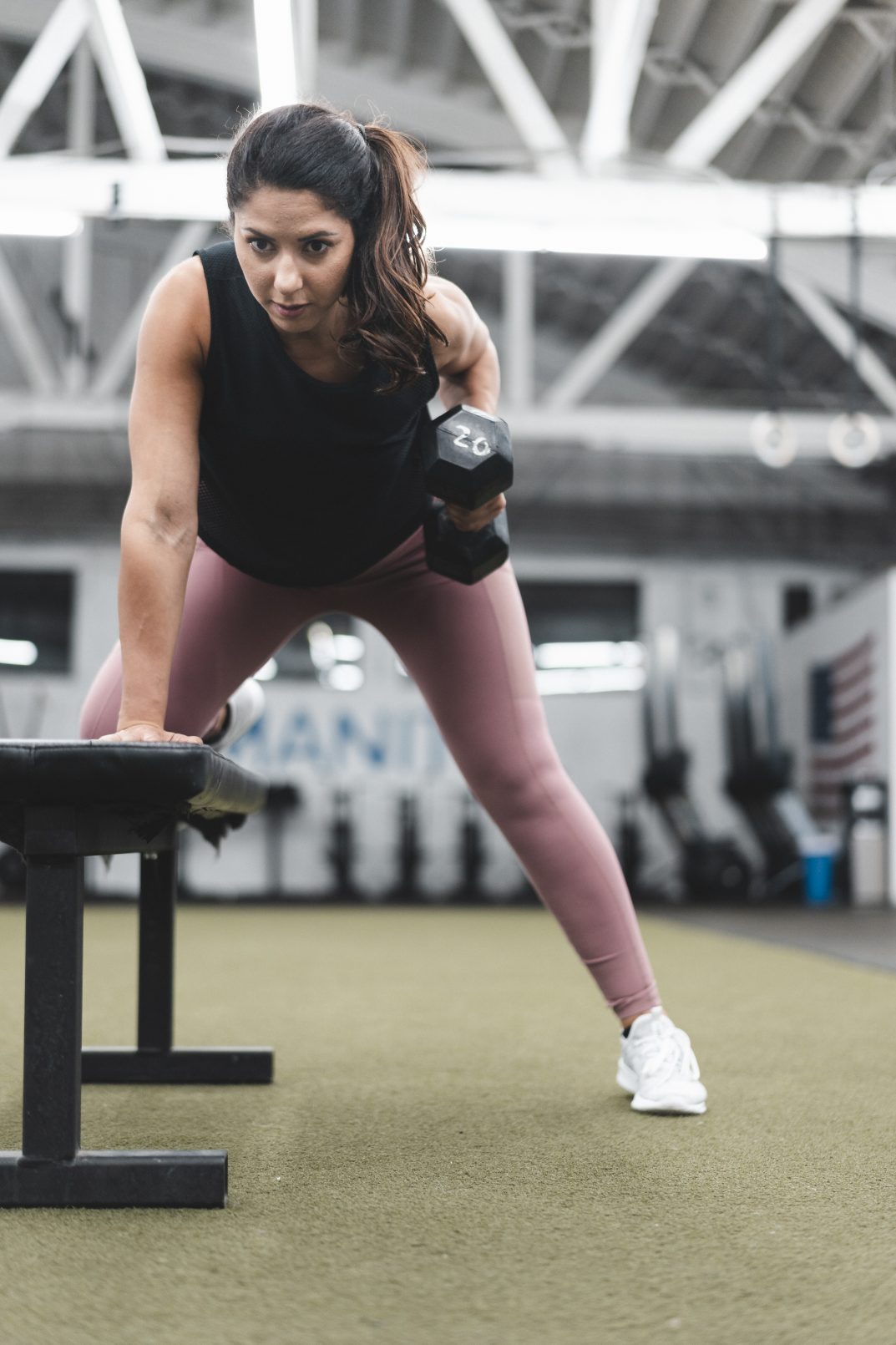It’s one thing to get on social media and wax poetic about the benefits of lifting heavy for women, and it’s another to get your female client committed to doing so.
The stigma with women and lifting has been around for longer than most of us have been alive, and there’s a perpetual cycle of misinformation out there that fitness professionals have to break through 24/7.
Getting ‘buy-in’ from your female client to lift more (and heavier) is thankfully not an impossible task. I’ve coached plenty of women who began with a firm belief that more cardio + less calories = looking good naked or simply balked at the mere suggestion of lifting anything more than 10lbs.
God bless those ladies. They have come a very long way.
Reality is, a majority of women in the general population category come to us, the fitness professional, with negative connotations of lifting heavy and/or lack experience doing so in a positive manner. We can share and reshare memes about how “Strong is Sexy” or write a dissertation about how lifting has helped Jennifer Lopez still look like a fox at age 50 and it wouldn’t matter.
Those things do not resonate with your female client. Heck, that stuff doesn’t even resonate with me!
Instead of appearing preachy and downright insensitive, here is how to get your female clients to buy in to weight lifting and love it.
STFU and listen to what she wants
By the time this client comes to get a trainer, she is already in a deep state of frustration, desperation, or fear. (Note: I don’t think that’s true for everyone but it’s common.)
This woman has tried everything she possibly could on her own – and now she’s ready for someone else (me or you) to guide her because she recognizes she’s just spinning her wheels. This is good because it means she’s open to the idea of trying something different before even walking through the door.
This is the moment where you, the trainer, take a moment to STFU and seek to understand her experiences and fears around lifting. It’s never as simple as “I think lifting might make me bulky.” There’s some deep rooted beliefs there to uncover.

Perspective is everything
One of my clients, a former athlete, is surrounded by very thin friends who barely workout and seem to never eat. From her perspective, less eating + more calorie burning (via cardio) is how she will attain a similar body type to her group of friends. Logically, she understands that this is not the way to achieve her goals and that she has a different frame than her non-athletic gal pals. But every once in a while she defaults to this old thinking and starts cutting carbs and overexercising.
Another was an ex-CrossFitter who really enjoyed the intensity and camaraderie of the sport back in her single days. Now a mom of three, she struggles to accept that she can make long lasting changes to her body without high intensity exercise, so she runs, bikes, and does HIIT as much as possible.
Old habits are hard to break but old ways of thinking are even harder. Getting to know your female client’s relationship with her body and how she has come to that perspective is everything.
Let her do her thing
When I first started out, I’d try to help my clients change everything at once – food, exercise modality, sleep habits, etc. This was a mistake (and likely one all of us make), because I didn’t have complete buy-in yet.
What did work was allowing my overzealous clients to keep doing their thing outside of our training hours together while strength training exclusively during our private sessions.
That former athlete I mentioned continued on her cardio rampage the first year we started training, but twice a week I made her lift heavy with me. No MetCons, HIITs, or crazy finishers. Her workouts were (and continue to be) consistent, basic, and progressive.

Choosing to back squat over cardio
Eventually, she came to the conclusion on her own that lifting was a much better alternative for body composition changes than all the other things she had done previous years. She got excited about new PRs, would notice and praise her muscle definition, started lifting with her husband, and got excited about weight lifting on her own because the results spoke for themselves.
It took time but I eventually got her buy-in simply by focusing our sessions on lifting and allowing her to do her thing on her own time.
Form positive associations with lifting
Women have a complicated relationship with their bodies.
We are told how to look and how to dress, how to be sexy but not slutty, how to exercise but not too heavy, to appreciate our natural curves but fat shamed for a few dimples or stomach roll. Our family members call us out for eating too much or not enough; getting chunky or getting too thin. Media tells us to love ourselves but not too much because that’s cocky. We’re expected to embrace our own pleasure but humiliated if we enjoy it.
Do you see how exhausting those mixed messages are?!
Getting buy-in from your client to embrace lifting heavy is a hard sell because of this! It’s a daunting task because of all those mixed messages that tell us to love and hate our own bodies, even while we’re doing something beneficial for it.
It’s not your job to unf*ck women’s association with their bodies, but you can help them create positive associations with lifting, which will carry over into the beliefs they have with their bodies.
Focus on:
- A performance goal and help her work towards that
- Praise her when she hits a new PR, no matter how small
- When she nails a move or seems more conditioned than before, remind her of where she started
- Celebrate her muscles and shape, not her weight
- Take progress photos and send her a recap, pointing out all the positive changes to her body composition
- Sprinkle in something she really enjoys into the routine. My long-term clients love heavy hip thrusts, finishers, and density sets. We throw them in when it’s appropriate
- Use words like “strong”, “lean”, or “athletic” instead of “thin”, “small”, or “toned” when describing changes in their body composition
As your female client starts to change her own mind, then you can start advising her on what to do next to get to another level. This is usually when I challenge them to decrease their cardio sessions during the week and increase the lifting sessions. At this point, they’re already bought-in; I’ve earned their trust and they are more willing to listen to anything that’s going to help them more.
Getting buy in is just like lifting. It takes time, a whole lot of reps, and it’s very individual. Some clients might respond faster while others might take years.

